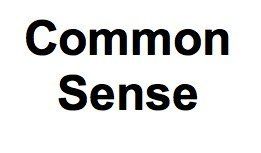Wes Moore, Candidate for Governor of Maryland and Author

Facing the November 8 election, Maryland voters have a clear choice for governor between Democrat Westley W. Moore and Republican Daniel L. Cox.
Wes Moore has experience in government, the military, the financial world, and the non-profit, service sector. His academic credentials include a Rhodes scholarship. His opponent, Del. Dan Cox, is a radical MAGA Republican who supports Trump and denies the legitimacy of the 2020 election.
Here’s why Wes Moore is my choice for governor.
Moore has written a number of books, including The Other Wes Moore: One Name, Two Fates, published in 2010; Discovering Wes Moore (2012); The Work: My Search for a Life that Matters (2014); Five Days: The Fiery Reckoning of an American City (2020); and Collapse: What Every Christian Should Know about Socialism, Capitalism, and the Future of American Prosperity (2021).
The Other Wes Moore combines an autobiography of Moore and a biography of a second man with the same name but with a very different life. The heart of the book is a question: Given similar childhood circumstances, why is one person’s life a disaster while another’s is a success?
As Moore was serving as a young army officer in Afghanistan in 2000, his mother told him about the other Wes Moore. That Wes Moore, along with a brother named Tony, and two other young men, robbed a jewelry store in Baltimore County. During the robbery, the security guard, a 35-year-old police officer who was moonlighting, was shot and killed. The four young men were quickly arrested. Although Tony confessed to the murder, both brothers were sentenced to life in prison without parole.
After returning to the United States, Moore wrote a letter to the other Wes Moore at the Maryland House of Correction in Jessup and to his surprise, received a reply. This was followed by years of correspondence and prison interviews. The author also interviewed members of the other Wes’s family, as well as his own, and later said that interviewing his own family was more difficult than his sessions with the other family.
The book is organized into chapters divided between events and people in Moore’s own life and parallel events and people in the other Moore’s life.
The parallels include growing up in blighted inner cities and both losing their father at a young age. While the author’s parents were both well-educated and his father was a successful journalist, the other Wes had little contact with his father and his mother had been frustrated by the loss of the opportunity for a Pell grant.
Author Moore had a strong male presence in his life with his grandfather. When his mother saw that he was getting out of control, she enrolled him in Valley Forge Military Academy. Although he first resisted and tried to run away, he adapted and eventually became a leader. The other Wes, although clearly intelligent, dropped out of school and, influenced by his older brother, became a drug dealer.
Moore’s second book, The Work, has chapters called “Lessons” and looks at mentors Moore admired, describing his life at military school, his studies at Johns Hopkins University and at Oxford on a Rhodes scholarship, his military service in Afghanistan, his work on Wall Street and as an intern at the Department of State.
Candidate Moore seems to have inherited the writing gene from his journalist father. Although he has firm academic credentials, he clearly writes for a broad audience and primarily, I believe, for a young and underprivileged audience and those adult professionals in a position to help them. Both books flow smoothly and hold the reader’s interest. They include a “Resource Guide” that lists religious organizations and agencies that help and support youth.
One thing is clear: Wes Moore’s life has been in service to others. He’s proud of his leadership in military school and later in the army, in being responsible for the well-being of his fellow students and for the men in his unit. He sees discipline as an antidote to violence in urban neighborhoods, to which the other Wes succumbed.
The “work” in the title of his second book describes Moore’s sense of his life’s mission. Moore is deeply religious and spiritual, and both books are about searching for his mission and a meaningful life. From his speeches as a candidate, the governorship appears to be one more step in carrying out his mission of service.
The trajectory of Wes Moore’s life and the people who have mentored him have prepared him for this moment. The people of Maryland can be grateful that we have such a man, along with his running mate, Aruna Miller, to confront Dan Cox and his running mate, Gordana Schifanelli, who are both right-wing extremists. For coverage of Wes Moore’s position on the issues in the upcoming election see his website.
A native of Wicomico County, George Shivers holds a doctorate from the University of Maryland and taught in the Foreign Language Dept. of Washington College for 38 years before retiring in 2007. He is also very interested in the history and culture of the Eastern Shore, African American history in particular.
Common Sense for the Eastern Shore







